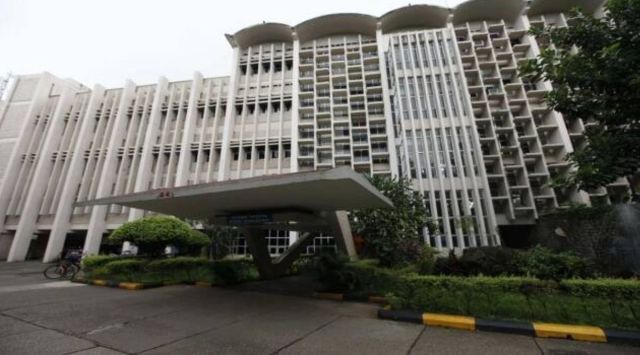The latest edition of the QS World University Rankings, released in the early hours of Wednesday, revealed striking changes with some universities making remarkable gains while others being placed significantly lower in the list than last year. QS, the UK-based ranking agency, has partly attributed the fluctuations to a revision of the ranking parameters. Pallavi Smart explains the changes and their rationale:

The ranking agency introduced three new parameters — sustainability, employment outcomes, and international research network, each carrying a weightage of 5%. These additions were made to the existing six parameters. While the ‘international research network’ indicator maps an institution’s ability to initiate cross-border research partnerships with other universities, the ‘sustainability’ parameter looks at the environmental and social impact made by an institution’s research and alumni. As for ’employability outcomes’, it measures an institution’s ability to ensure a “high level of employability for their graduates, while also nurturing future leaders who go on to make an impact in their respective fields.”
To accommodate the three new indicators, QS made adjustments to the importance assigned to the existing methodology. The weightage given to the academic reputation indicator has been lowered from 40% to 30%. Similarly, the emphasis on faculty-student ratio has also been decreased from 15% to 10% and the significance attributed to the employer reputation indicator has been increased from 10% to 15%.
 Source: QS
Source: QS
Q. What is QS’ rationale behind these parameter changes?
According to the ranking agency’s Vice President, Ben Sowter, the revision is driven by feedback received from students and participating institutions. For instance, the sustainability indicator, he said, was included based on the findings of QS’ annual survey of international students in which 88% of the participants felt that it is important for higher education institutions to reduce their environmental impact.
The same student survey, he added, also showed that employability was the third biggest factor helping students in shortlisting universities, which led to the inclusion of ’employment outcomes’ as a new ranking indicator. Regarding the inclusion of the ‘international research network’, Sowter said at a press conference on Monday, “We have witnessed a surge in international collaborative research. The world’s challenges are interconnected with the ability of countries to work together. Breaking down borders is crucial for solving these problems, and collaborative research has become the new norm.”
Story continues below this ad
Q. Okay, how does QS justify the reduction in weightage (or emphasis) on parameters like academic reputation and faculty-student ratio?
On the reduction in emphasis on faculty-student ratio (FSR), Sowter said “At a global level faculty-student ratio has been the only measure that we have been able to consistently gather. However, it has been viewed as a proxy for teaching quality rather than a direct measure. It is vital that varsities have sufficient qualified staff to teach their students, undertake their programmes and drive research work. So, we believe that it remains an important measure. However, with the onset of technology, and innovations which are enabling institutions to execute programmes more effectively; the relevance to faculty-student ratio has somewhat diminished.”
And on academic reputation, he added, “It carried 40 percent weightage. It was considered by some to be a little bit higher for any single indicator. As a result, when there was an opportunity to respond to some of that feedback, a little bit of weight is drawn from academic reputations to these new innovations.”
Academic reputation has received criticism, especially among Indian higher education institutions like the IITs. They believe that the ranking system’s heavy reliance on a survey of a predetermined group of academics gives too much importance to academic reputation, accounting for almost half of the ranking parameters.
Story continues below this ad
Q. Do Indian institutions stand to gain from these changes in ranking methodology?
Yes and no. It depends on the specific indicator you are referring to. In general, the reduction in emphasis on the faculty-student ratio (FSR) parameter (from 15% to 10%) will be beneficial for Indian institutions, considering their poor performance in this area in the past. Sowter explained, “Given the large number of students seeking education in India, it poses a challenge for Indian institutions to effectively accommodate all of these students. The reduced emphasis on FSR has proven to be helpful for most Indian institutions.”
On the other hand, the reduction in emphasis on the faculty-student ratio (FSR) has had a negative impact on institutions such as the Indian Institute of Science (IISc) in Bangalore. As a primarily research-focused institution with a lower teaching load compared to the IITs, IISc had been performing well on the FSR indicator. However, due to the decreased weightage, IISc has experienced a decline in its ranking this year, dropping several places from 155 to 225.
NIRF Rankings 2023 | Top Engineering Colleges | Top Management Colleges | Top Medical Colleges | Top Agriculture Colleges | Top research institutes | Top Colleges | Top universities
Story continues below this ad
The inclusion of employability outcomes has benefited several Indian institutions. Sowter highlighted Delhi University as an example of a university that has gained from this change. “Several Indian institutions have achieved notable rankings within the top 200-300 for this indicator. For instance, the University of Delhi has shown strong performance in the area of employment outcomes,” stated Sowter.
Q. But how can students make informed choices given the significant fluctuations in rankings?
We asked QS exactly this question and here’s what Sowter said: “There are roughly 30,000 universities in the world.. we are evaluating 1,500 which is the top 5% of universities.. considering that, moving by 50 places is a small percentage shift. Moreover, when we talk to students, we recommend that ranking should be only one input of the decision-making process. They should ideally be meeting students from the institutions, potentially speaking to alumni; to make more informed choices with other factors such as location, conversations with stakeholders.”



 Source: QS
Source: QS





























